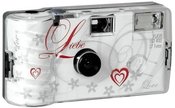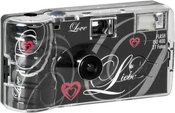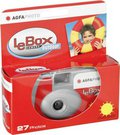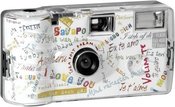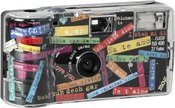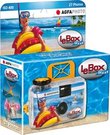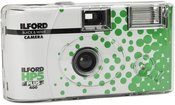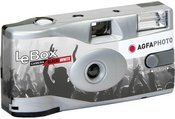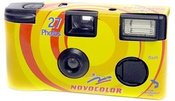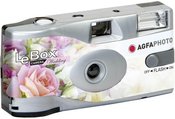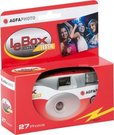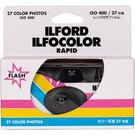Fotoaparatas.lt offers analog or film cameras. In the 21st century, these are most commonly 35mm cameras. Disposable film cameras come preloaded with 35mm (135 format) negative film, which, once developed in a lab, can produce prints of various sizes. Lomography also manufactures analog or film cameras in other formats. These are often medium format cameras using 120mm film. The width of these films is standardized at 6 cm, but the length depends on the camera, with formats such as 6×4.5, 6×6, 6×7, 6×9, and panoramic 6×17 cm. A somewhat rarer format is large format. Large format cameras use large film sheets or negatives measured in inches, such as 4×5 inches or 8×10 inches. Ilford produces such film sheets.
FILM CAMERAS are cameras that use photographic film. Typically, the film is a plastic strip coated with light-sensitive emulsion, which forms a latent image when exposed to light. The film is later processed through a chemical procedure called film development to produce visible images. For capturing images, 35mm format film is most commonly used.
FILM CAMERAS – POPULAR AND BELOVED
Even in the 21st century, analog film cameras remain a popular and cherished tool for photography. Film photography is experiencing a resurgence among both professionals and amateurs. Even tech-savvy individuals of the modern age are abandoning smartphones and digital cameras to embrace vintage film cameras.
To control the amount of light, a camera uses a shutter to regulate the duration of exposure. Another factor influencing the film's exposure is the ISO rating or number. In digital photography, ISO is controlled by the camera, while in film photography, the ISO is determined by the film. Each roll of film has an integrated ISO value that must be set before shooting.
Film cameras are favored by serious photographers who appreciate the detail, color accuracy, and exposure flexibility of film. Thanks to these qualities and the higher natural saturation, photographers can achieve excellent results without spending hours editing their work. The most commonly used cameras are 35mm, medium format, and large format.
3 MAIN FILM SIZES:
- 35mm film, also known as 135. Its negative size is 36 x 24 millimeters, and it is available in rolls of 24 or 36 exposures.
- 120 and 220 medium format film, with a width of 60 millimeters. Depending on the camera's aspect ratio, one roll can capture 10 to 30 images.
- Large format film, typically available as sheets measuring 107 x 127 millimeters (4 x 5 inches).
Photographs taken with fine-grain 35mm film have a resolution similar to those captured with semi-professional DSLR cameras. Images captured with medium and large format cameras are more detailed, enlarge well, and exhibit minimal graininess.





